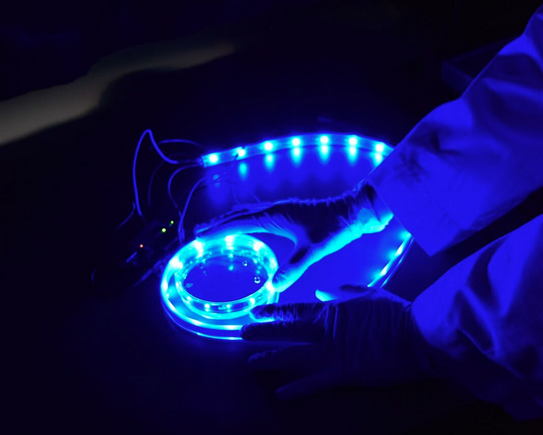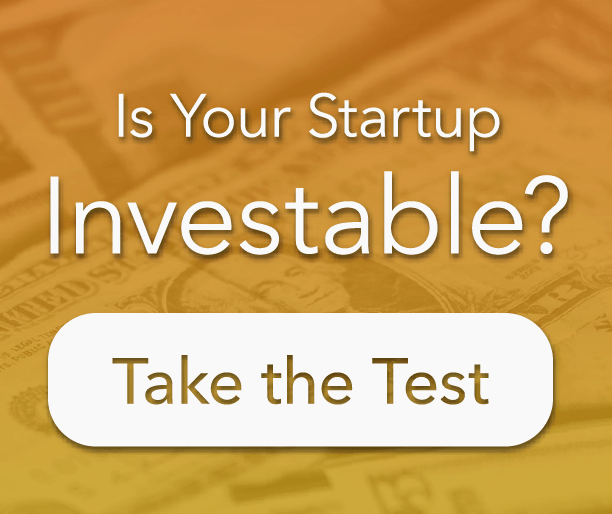
Optologix believes that basic research studies, such as understanding how a plant photo-sensor works, can lead to really useful and exciting tools that can have broad applications.
Name: Optologix, Inc.
Location: Dallas, TX
Website: www.optologixllc.com
Product / Service Offering: Light-activated genetic tools for use in biomedical research
Co-founder Interviewed: Dr. Laura Motta-Mena, PhD, Co-founder and CEO
Other Key Management Team Members: Prof. Kevin Gardner, PhD, Co-founder and CSO
This article is part of our Women Entrepreneurs Spotlight Series featuring female entrepreneurs and their companies. We hope these founders’ interviews will inspire and motivate you as you undertake your own entrepreneurial journey.
Tell us a little about yourself with a focus on what motivates you?
I’m a research scientist by training and one of the things that I’ve always been interested in is how organisms sense and respond to their environment. For example, plants are able to move towards light because they contain molecules called photo-sensors. These molecules, as their name implies, sense light and perform an activity in response, in this case the plant moves. We’re interested in adapting and re-engineering these types of natural photo-sensors into new light-responsive research tools that can simplify and increase the efficiency of biomedical research. We believe that basic research studies, such as understanding how a plant photo-sensor works, can lead to really useful and exciting tools that can have broad applications.
When did you establish your company and where did the idea originate?
We founded Optologix a little over a year ago in June of 2015. The idea came when we presented our results on a light-driven genetic tool to the research community. Several researchers were interested in trying the tool because they were frustrated with the limitations of conventional research tools, which use drugs to control activity within a cell or animal. After talking to more people we realized that there were many more researchers out there who would use light-based tools but that have limited access to the materials, equipment, and expertise needed to get the technology up and running in their labs. We believe that Optologix is ideally suited to meet this need and open a new market into chemical-free, light responsive research tools.
 What need or needs does your company seek to fill for its customers?
What need or needs does your company seek to fill for its customers?
Our customers are life science researchers working in the biotech and pharma industries, as well as academic, nonprofit or government organizations. An essential part of their work requires that they have a way to control when a gene is turned on or off inside of a cell. They do this to determine whether that gene is or isn’t responsible for a particular disease. The tools scientists use today for this purpose rely on the addition of drugs, like antibiotics or steroids, to cells to switch on or off a gene. The problem is that drugs are known to have multiple side effects once they are inside of a cell, meaning that researchers may be collecting inaccurate results because the drug-based tool is not just affecting the specific gene they’re interested in. To solve this problem we’ve developed a research tool that uses light as the signal to control genes inside of a cell. In contrast to drugs, light is a non-invasive and highly specific stimulus that can be easily applied to and removed from a cell. It’s as easy as turning on a light switch.
The Key to Success: Customer Discovery
What is the one thing that sets your company apart from its competitors?
We’ve identified the limitations of drug inducible research tools and have developed light activated alternatives that will open a new market and ultimately allow researchers to get faster and more reliable results. A year after forming Optologix, our tool is already being used by over 60 early adopters in academic and industry R&D labs around the world for a variety of applications. We believe these tools are the start of a new generation of research tools that will open new possibilities in biomedical research.
What was the biggest challenge you faced while getting your company up and running, and how did you overcome it?
Because we developed our technology while working at a university, as a result that university owned the IP rights to that technology. Therefore we had to negotiate a license agreement with the school for the IP and the rights to commercialize it before we could start doing business. This process took several months and involved working with officials at the university’s Office of Technology Development. We also had to bring on an advisor with experience in these types of deals and an attorney to review the license draft. Ultimately what helped to push our contract through was the fact that we had been talking to the university tech office about our plans to form a startup a year before we officially approached them for license. The director’s office already knew us personally and was supportive of our efforts because she knew we were serious, focused, and had a plan to commercialize the technology.
Is Your Startup Investable? Take the Test and Find Out Now!
Are there resources you have utilized that other founders might find compelling or useful?
We previously participated in Entrepreneurship Lab NYC, a training and mentorship program specifically for aspiring entrepreneurs in the life sciences who are interested in forming new biotech ventures. The competitive program consisted of a mini-MBA course, business mentor meetings, and culminated in a Pitch Day where we delivered our first business pitch in front of investors. We met our current business advisor in ELabNYC and also made several connections with leaders in the biotech and pharma industries.
Optologix is currently part of the 2016 class of Health Wildcatters, a top ranked healthcare accelerator program located in Dallas, TX. As part of our participation in the 12-week program we received seed funding, a workspace, access to seasoned mentors, and the opportunity to present our company to angel and VC investors at a Pitch Day event at the end of the program.
6 Items to Prepare Your Pitch to Investors.
What steps have you taken to secure funding for your company and what, if anything, would you do differently if you had to start over?
To date we’ve sought funding from accelerators like Health Wildcatters, pitch competitions, and Small Business Innovation Research (SBIR) grants from federal agencies like the National Institutes of Health.
We’ve learned that it’s important to show investors that you have a well-rounded team leading the company. In our case, we had the technical side covered however we needed to add people with business and startup experience to the team. We were slow to realize this and as a result we did not start actively looking for business advisors and board members until later.
3 Considerations for Advisory Board Compensation
Have there been any questions you have had as an entrepreneur of a fledgling startup that you had a particularly hard time finding the answers to?
Because the idea of light activated research tools is relatively new, market related information for this area is scarce. Therefore we relied on information for comparable drug based technologies. However, even in this case, there were few market reports that specifically looked at these products, instead most reports provided information on life science research tools in general.
Interested in learning about accelerator programs? See our Startup Accelerator Spotlight.
What challenges, if any, are you grappling with?
A challenge for us currently is to prepare an effective marketing strategy that includes website product pages, advertisements, email newsletters, and more. Now that we’re participating in Health Wildcatters we’re receiving help and advice on this from mentors, but it’s still a challenge.
What is the most helpful tip or “hack” you’ve ever learned, stumbled across, or been given?
There are two pieces of advice that I think about often and try to apply. The first one came from our business advisor who told me “You don’t get what you don’t ask for”. The second came from a program mentor, who told me to always say yes to an opportunity to present a pitch or attend a networking event, especially if it’s sponsored by the incubator or accelerator you’re a part of or were a part of in the past. You never know who you might meet or talk to and what follow-on opportunity that conversation might lead to.
Is there anything else you would like to share about your company?
We’re currently focused on providing light activated genetic tools specifically for research purposes. In the future, we’d like to develop additional products for diagnostic or therapeutic purposes. These might be in the form of a medical device or biotherapeutic that integrates our light triggered technology. To accomplish this we would like to collaborate with clinicians and engineers to understand the challenges these markets face and how our technology might help.
Are you familiar with other Women led startups? If so, we would like to hear from you. Tell us about them, sharing your comments below!
Can’t find the tools to guide you through the startup process? TurboFunder can help!









